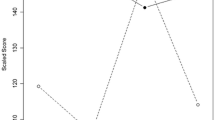Abstract
This study examines the differences in students' perceptions of the amount of improvement in dimensions of teaching skills across levels of instruction, class sizes, and disciplines. The relationship between factor scores on the dimensions of teaching and students' overall ratings are also analyzed across instructional settings.
Student ratings were collected in 2,816 classes in a Faculty of Commerce over three semesters. Using class means as a unit of analysis, the data were factor-analyzed. Factor scores were used as dependent variables in examining differences across course characteristics. Factor scores were further used to predict ratings of the overall quality of instruction. These predictions were subsequently compared across instructional settings.
In the combined sample, differences in students' perceptions were found across levels of instruction for all factors, and across class size for two factors. When analyses were conducted on these variables within separate disciplines, the results varied. The relationship between factor scores on the dimensions of teaching and students' overall ratings varied across instructional settings.
The results are discussed in relation to previous research on the dimensions of teaching and in relation to the concept of students' normative assumptions about teaching behavior. Some practical implications of the results are also described.
Similar content being viewed by others
References
Abrami, P. (1985). Dimensions of effective college instruction.The Review of Higher Education 8:211–228.
Caldwell, J., and Jenkins, J. (1985). Effects of semantic similarity on student ratings of instructors.Journal of Educational Psychology 77:383–393.
Cohen, J. (1977).Statistical Power Analysis for the Behavioral Sciences. New York: Academic Press.
Cranton, P. A., and Hillgartner, W. (1981). The relationship between student ratings and instructor behavior: Implications for improved teaching.Canadian Journal of Higher Education 11:73–81.
Cranton, P. A., and Smith, R. A. (1986). A new look at the effect of course characteristics on student ratings of instruction.American Educational Research Journal 23:117–128.
Cranton, P. A., and Smith, R. (1990). Reconsidering the unit of analysis: A model of student ratings of instruction.Journal of Educational Psychology 82:207–212.
Erdle, S., and Murray, H. (1986) Interfaculty differences in classroom teaching behaviors and their relationship to student instructional ratings.Research in Higher Education 24: 115–127.
Feldman, K. (1976). The superior college teacher from the student's view.Research in Higher Education 5: 243–288.
Feldman, K. (1984). Class size and students' evaluations of college teacher and courses: A closer look.Research in Higher Education 21: 45–116.
Kulik, J., and McKeachie, W. (1975). The evaluation of teachers in higher education. In Kerlinger (ed.),Review of Research in Education, vol. 3. Itasca, IL: Peacock.
Larson, J. R. (1979). The limited utility of factor analytic techniques for the study of implicit theories in student ratings of teacher behavior.American Educational Research Journal 16: 201–211.
Marsh, H. (1984). Students' evaluations of university teaching: Dimensionality, reliability, validity, potential biases, and utility.Journal of Educational Psychology 76: 707–754.
Marsh, H. (1987). Students' evaluations of university teaching: Research findings, methodological issues and directions for future research.International Journal of Educational Research 11: 253–388.
McKeachie, W. J. (1983). Defining the components of teaching: A closer look. Paper presented at the annual meeting of the American Educational Research Association, Montreal.
Neumann, L., and Neumann, Y. (1985). Determinants of students' instructional evaluation: A comparison of four levels of academic areas.Journal of Educational Research 78: 152–158.
Whitely, S. E., and Doyle, K. O. (1976). Implicit theories in student ratings.American Educational Research Journal 13: 241–253.
Author information
Authors and Affiliations
Rights and permissions
About this article
Cite this article
Smith, R.A., Cranton, P.A. Students' perceptions of teaching skills and overall effectiveness across instructional settings. Res High Educ 33, 747–764 (1992). https://doi.org/10.1007/BF00992056
Received:
Issue Date:
DOI: https://doi.org/10.1007/BF00992056




